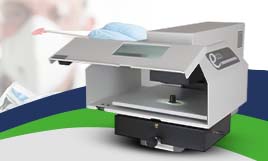How Does the Freeze Drying Process Work?
Lyophilization or most commonly known as Freeze Drying is essentially a water removal process that is typically used for the preservation of perishable items. This process is applied in order to extend the shelf life of items and to also prepare them for hassle-free transport.
This process works by freezing the material then diminishing the pressure and applying heat to enable the frozen water in the material to alter directly to a sublimate ( vapor). We at BCL supply high-profile freeze drying solutions that use unparalleled technology to deliver optimised performance.
The process of lyophilization is applied in several industries such as Food & Diary, Pharmaceutical and more. But before you explore our products make sure to know all things important about freeze drying/lyophilization now.
How Does It Work?
Well, the process of freeze drying happens in three stages and they are –
i. Freezing
ii. Sublimation (primary drying)
iii. Adsorption (secondary drying)
With the application of proper free drying maintained, the drying times can be reduced by 30%.
Stage 1 – Freezing
It is the most critical stage in a freeze drying process and it can be achieved using many different methods. It can be done simply using the freezer or by a chilled bath also known as shell freezer.
Alternatively, many achieve it by keeping the material on a shelf in the freeze dryer. Cooling the material far below its triple point pushes it to reach the sublimation stage rather than its melting stage. This helps in holding its physical form.
Stage 2 – Sublimation
This is where primary drying or sublimation happens in which the pressure is decreased and heat is included to the material. This is done for the water to reach the sublimate stage.
The vacuum which is created helps in speeding the sublimation. The cold condenser, on the other hand, offers a surface for the water vapor to hold and then solidify. The condenser also safeguards the vacuum pump from the water vapor.
As much as 95% of water from the material is removed at this stage of freeze drying. It is a slow stage and can take several hours to accomplish. Also, it is to be noted that too much heat can change the material structure entirely.
Stage 3 – Adsorption
This is the final stage where secondary drying or adsorption occurs. At this stage, the ionically bonded water molecules are eliminated by applying a higher temperature than the primary drying or sublimation stage.
The bonds are broken between the water molecules and the material. The freeze dried materials hold a porous structure and only after the process is successfully completed, the vacuum can be broken with the help of an inert gas prior to which the material is sealed and preserved.
We at BCL offer the best Freeze Drying solutions that offer reliable and innovative features to get enhanced results. The advanced Infinite technology that our freeze dryers are equipped with delivers continuous sublimation and also automatically maintains cleansed condensers at -105°C.
But that’s not all, users get more flexibility to monitor and regulate the dryers with its Infinite-Control feature that enables entire process control of all relevant limitations, via the use of mobile devices.








